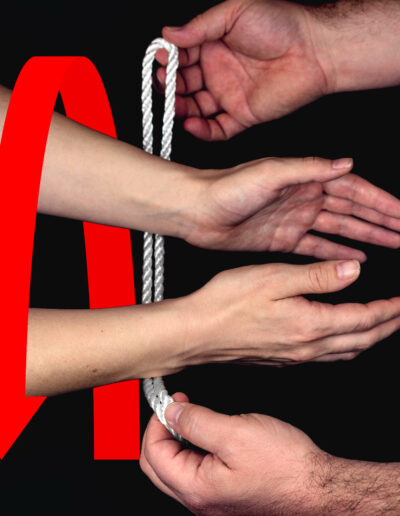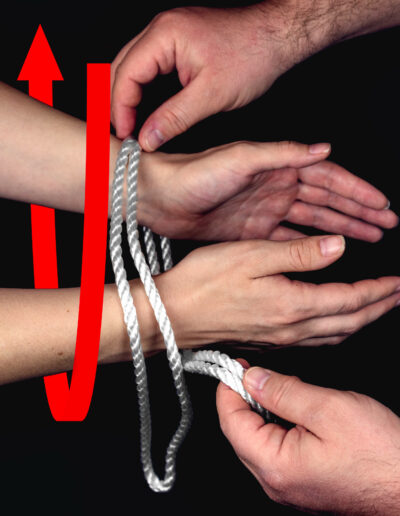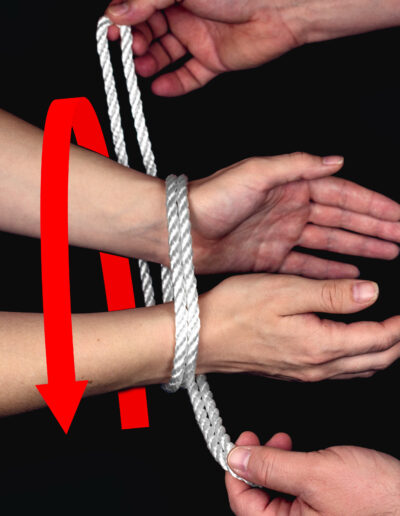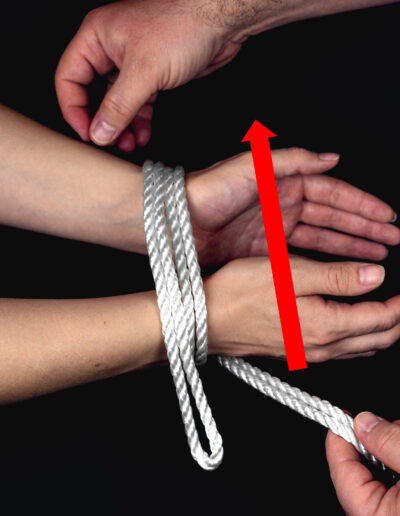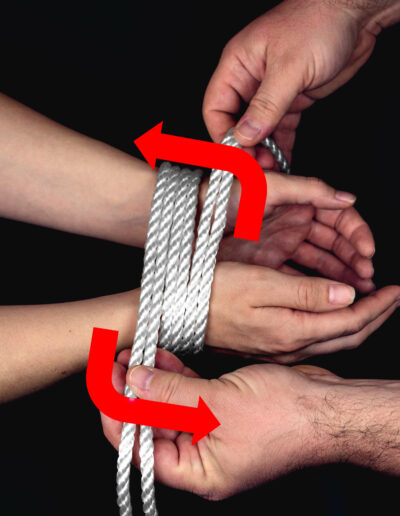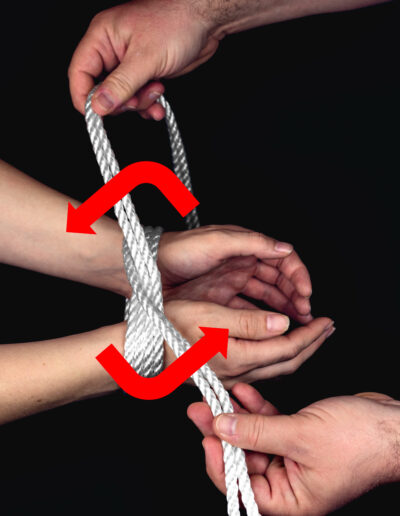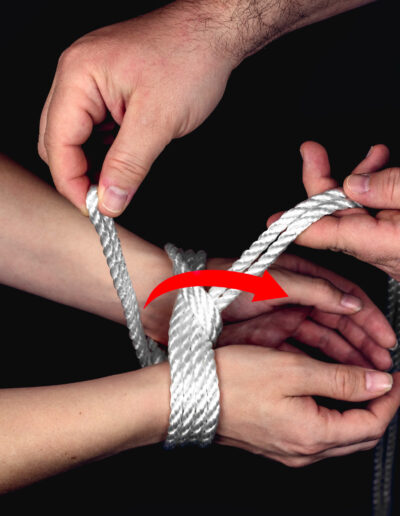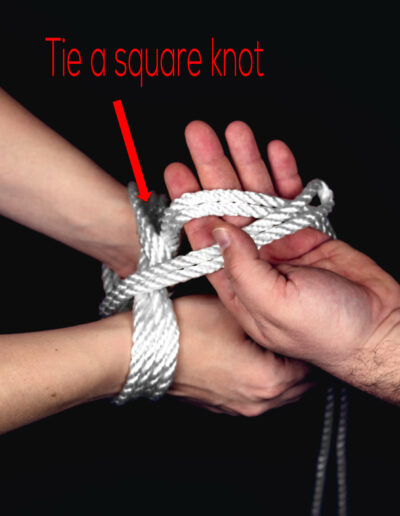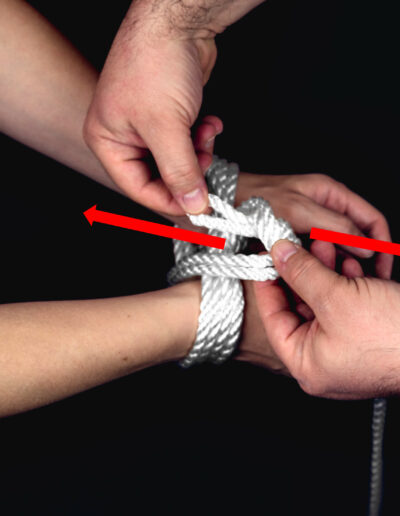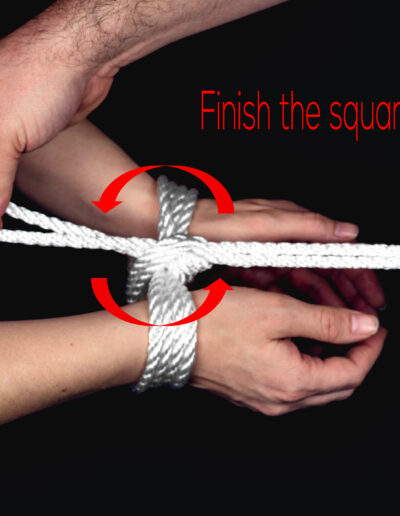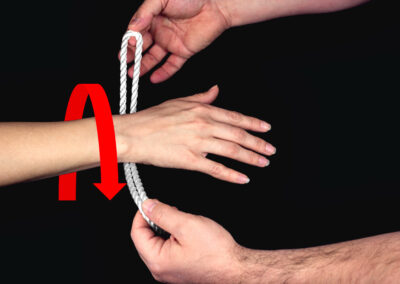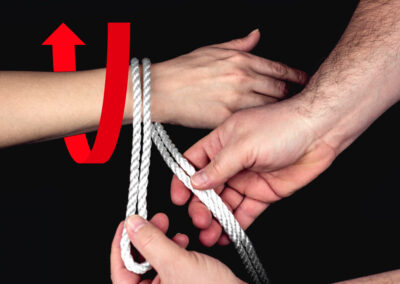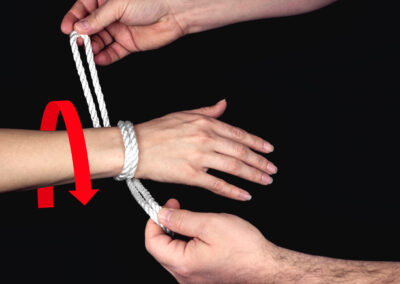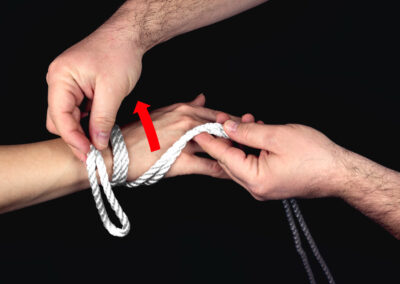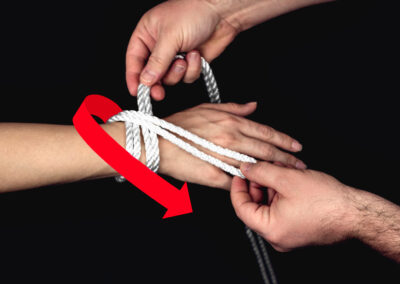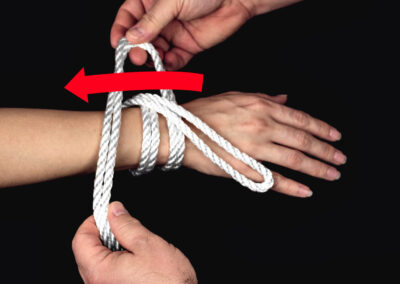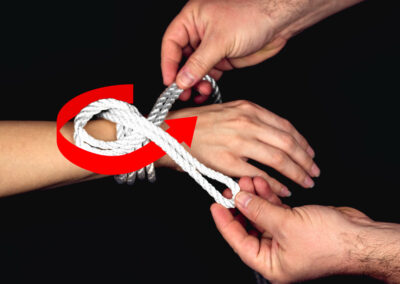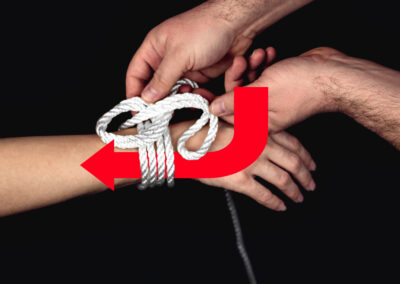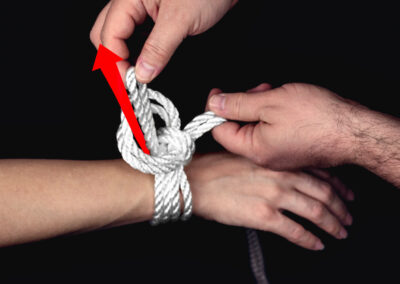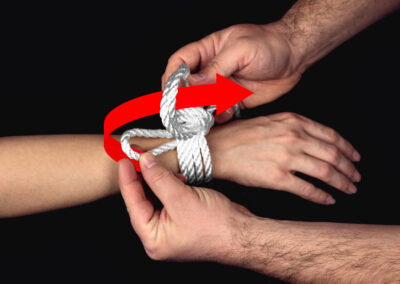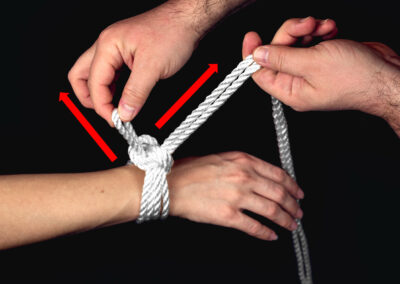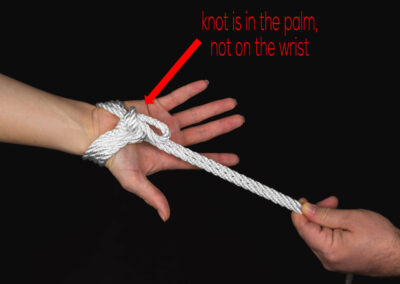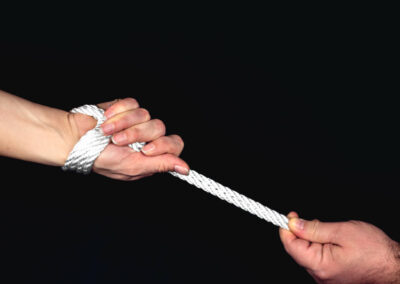Your Guide to Rope
About Your Rope
The rope in your box is nylon, which feels soft and smooth against the skin and makes for great bondage rope. But don’t let that softness fool you: nylon is also very strong and, if pulled quickly across the skin, can cause rope burn.
Nylon rope is also very durable and won’t shrink if it gets wet (unlike some other ropes). Because it’s naturally so resistant, you shouldn’t have trouble keeping it clean, and you shouldn’t need to wash it very often. If you do need to wash it, coil it loosely in a netted lingerie bag and run it through the gentle cycle of your washing machine using a mild detergent and cool or warm water. Hang the rope to dry.
For both of these, remember not to tie them too tightly around the wrists or ankles, for the reasons covered in Basic Safety below.
Basic Safety
Safety is an important part of learning to enjoy worry-free rope bondage. With simple ties, there are only a few general safety concerns that you should know. More complicated ties introduce additional concerns that you should explore later if you decide to continue enjoying rope bondage.
For now, let’s examine the most common concerns.
Rope Marks: While not really an “injury,” you should know before being tied that the rope will likely leave impressions on your skin that can last from a few minutes to a few hours. In addition, petechiae can sometimes result from the rope pinching the skin, and those marks can last for a number of days. Rope marks are usually unavoidable (unless there is very little tension on the ropes), but petechiae can be avoided by running a finger under the bands to settle the ropes and remove any small gaps in the bands that might pinch the skin.
Rope Burn: If the rope is moved too quickly over skin, it can cause rope burn. This is usually very mild. However, severe rope burn may break the skin. To help avoid this type of injury, pull the rope slowly when it’s lying against the skin, don’t let the rope get caught in places where the skin folds on itself (elbows, knees, arm against the body, etc.), and hold the rope out and away from the skin when possible if moving quickly.
Joint Injury: The joints are among the most vulnerable parts of your body. You should try to avoid putting rope directly over a joint when possible. Where unavoidable, such as when tying someone by their wrists and ankles, you should keep some space in the tie to keep the rope from tightening around the joint. Tight rope around a joint can lead to circulation loss, nerve compression, and even broken bones in extreme situations.
Muscle Strain: We assume that most of the rope bondage you will explore at first will involve tying your partner to a bed or other object or tying your partner into a revealing position with tight wraps of the rope. In both cases, pay attention to how much stress you’re putting on your partner. If their muscles are already being stressed because you’ve stretched them to tie them to a bed or you’ve twisted them and tied them into position, those muscles can become sore after a little time. If you add the involuntary reactions that happen during orgasm, it’s possible that the muscles could be over-taxed in those situations. To avoid this, don’t tie your partner to the limit of their flexibility or in a way that requires the to constantly engage their muscles, and them be attentive to how they’re feeling as time passes.
Circulation Loss and Nerve Compression: Generally speaking, circulation isn’t a major concern. In most cases, a limb can be without circulation for the length of a typical rope interaction (30 minutes or so) without any issues. However, the larger concern with reduced circulation is that, when a limb goes numb, it can mask other important warning signs, the most common of which is nerve compression or damage.
There are a number of places on the body where nerves are vulnerable to compression injuries, particularly in the arm-pit, around the outside of the upper-arm and elbow, in the inner thigh and the crease of the waist/groin area, and along the outside of the knee and lower leg. Unfortunately, these are also locations where rope is often placed for many common ties. Therefore, it’s important to pay careful attention to these areas during any bondage session and monitor sensation carefully. Damage to nerves can result in anything from sensation loss to temporary (and sometimes even permanent) control of a hand or foot.

